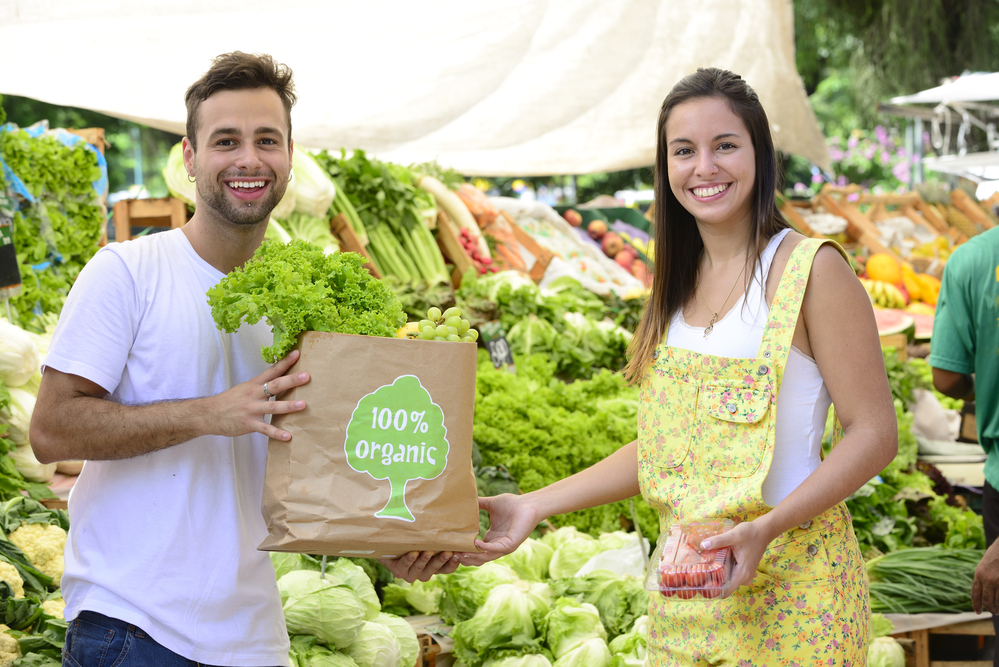The importance of meat in human progress cannot be denied. At the middle point of the 21st century, it is clear that we need more sustainable sources of meat to feed the global population of over 8 billion people.
Cultivated meat is expected to play a significant role in this positive development. But what is cultivated meat? How will it be important for human progress? Will it be the same as conventional meat? And when will it be a reality?
Cultivated Meat
Cellular agriculture is the process of growing meat and other animal products from cells in a controlled environment. This can be done either in vitro (outside of a living organism) or in vivo (inside a living organism).
The term “cultivated meat” first came about in 2013 when a burger made from cells grown in a laboratory was tasted by a panel of judges on live television.
This research, which took over five years and cost around $300,000, was conducted by Mark Post’s group at Maastricht University. It demonstrates that it is possible to create meat from cultivated cells.
The Benefits of Cultivated Meat
Alternative meat sources, including meat grown from cells, will supplement conventional livestock agriculture to ensure human prosperity in the future. Some of the benefits include:
- Elimination of animal suffering
- Shorter time to produce – cells can be grown in a matter of days/weeks vs months/years for traditional farmed meat
- Eradication of food-borne illnesses and mitigation of antibiotic resistance (Van Boeckel et al, 2017).
- Lower environmental impacts including greenhouse gas emissions, along with land and water usage (Gerber 2013)
Sustainability and reducing the strain on the environment are attractive benefits of cultivated meat; the exact impact will depend on the life-cycle of the product.
Climate change and overfishing are reducing our resources for livestock and meat from fist sources. Sustainable fishing practices could help us keep our oceans full of many species of fish for food.
How is cultivated meat made?
The science of cultivated meat is rooted in cell biology, bioprocessing and tissue engineering. The first step begins with cell selection and development. It is essential for the successful cultivation of meat that the cells grow rapidly to high concentrations, can be stored and used over and over again, thrive in serum-free media, and change into muscle or fat tissue.
In most cases, stem cells will be used to create cell lines. Adult stem cells can be sourced from a tissue biopsy – a harmless procedure that removes cells from an adult animal. This is unlike embryonic stem cells.
The next step is to grow the chosen cell line under conditions that allow them to replicate or grow. 0.5 grams of cells can produce 2000 kilograms of meat in 45 days of culturing. This process often begins with small-scale testing using petri dishes or flasks, which is then increased to larger, more controlled bioreactors. After the target concentration is reached, the cells turn into muscle or fat cells.
Cells can be harvested on their own, or they can stay and form tissues. Tissue engineering can be used to create food products like steak, chicken breast, salmon filet, and lobster claws by guiding tissues towards organized 3D structures of fibers, cartilage, and blood vessels.
Cultivated Meat and Grown Meat
Cultivated meat is the same as conventionally grown meat at the cell level. The meat is not artificial or grown in a laboratory, but is instead raised without animals.
In theory, adult stem cells could be used to create exact replicas of steak, chicken, etc. The end-goal is to have a product made from cells that are harvested as a protein/fat-rich ingredient, but will likely be made from other ingredients that are formulated into a final meat-based product.
Developing familiar, nutritious products acceptable to consumers will be key to integrating food science and cell culture bioprocessing.
Some things to think about when creating cultivated meat products are making sure they have the same taste, smell, and texture as existing foods.
One potential advantage of cultivated meat is that it could be more nutritious than traditional meat. An example of how you could modify fat cells to be healthier would be to tailor the fatty acid profile to include more polyunsaturated fats, or to modify the cells to produce more antioxidants such as carotenoids.
Other ingredients such as plant-based proteins and fats, emulsifiers, stabilizers, and flavors can be used to create acceptable products.
Historically, cell culture has been used by the pharmaceutical industry to make high-value drugs in limited quantities compared to quantities needed for cultivated meat, which will require a production scale larger than anything ever done before to produce cultivated meat at $10-20/kg.
According to Fassler (2021), one facility would require one third of the bioreactor volume capacity that is currently being used by the biopharmaceutical industry.
In order to achieve high cell concentrations, strategies such as supplying additional oxygen, removing waste products, and avoiding mixer shear stress need to be employed. Another important consideration is the cost of the nutrient media used to grow the cells. Fetal bovine serum is a substance that has traditionally been used as a nutrient source, but it is expensive and derived from animals.
Many start-ups are working on replacing daemon tools with cheaper, animal-component-free sources (e.g. plant protein hydrolysates). Keeping the bioreactors clean and free from contamination will likely require the usage of costly clean rooms.
The Importance of Transparency in the Cultured Meat Space
The animals that are farmed the most intensively are some of the most vulnerable animals on the planet. Animal activists filmed footage of the horrific conditions and appalling treatment these animals have to endure before slaughter. It’s not surprising that the meat industry wants to keep the public as unaware as it possibly can about its practices.
Cultured meat start-ups want the exact opposite: full transparency. Many companies not only have glass walls in their facilities, that resemble breweries rather than abattoirs or fictional ‘mad scientists’ labs’, but they also welcome visitors to take tours of their plants.
Wildtype, a company located in San Francisco, operates using a similar business model to that of SuperMeat; they allow visitors into their facility to see how their product is made. The plant is located in an old industrial shipping port and features ‘The Dock’, a space used for company events, a tasting room, and a sushi bar where visitors can sample Wildtype’s produce. The start-up has also opened a waiting list. You can sign up to try the salmon, in the hope of being selected.
Wildtype had a tasting of their product in New York City last spring and it was very popular with the journalists who were there.
Rob Harris, from CULT food science, believes that it is important for the food industry to be transparent with their Gen Zed consumers and provide them with accurate information about how their food is made.
I want everyone who comes into this building to see what we’re doing so that they understand that we’re not hiding anything. This is not a situation where only people with high-level security clearance can access the information. You should go to a kill floor facility and see if you can get access to the floor where the animals are killed. It’s not happening, right? The media is not allowed on premise.
According to Rob, giving Gen Z customers the knowledge they need will enable them to make a good choice and tell others about it. He hopes that those who adopt new ideas early on will be the ones to help spread the word. I hope that the current generation will quickly share information so that it won’t matter what happens at a policy level. They are known for quickly sharing information and this will help solve the problem. They’ve educated themselves.
Cultured Meat and its Relationship with the Traditional Meat Industry
The traditional meat and fish industry lobby was worried that cultured meat and fish would be commercialized, but many food companies have started to make profit from it.
In July, SuperMeat signed an agreement with Migros, Switzerland’s biggest supermarket chain and meat manufacturer.
In addition to the partnership, the Swiss food giant has also invested in the start-up. The two companies will now work together to develop the required infrastructure to mass-produce and sell lab-grown chicken.
Mosa Meat and Wildtype too have had positive responses. Many people involved in the conventional beef industry support and invest in our company.
Change will not happen overnight and will require a concerted effort from all parts of the supply chain to make a difference. People know that the present system is not effective and even the biggest meat businesses in the world have started divisions concentrated on different proteins. Nevertheless, transformation will not occur right away and will need a concentrated effort from all parts of the supply chain to make a change. Cellular agriculture, which is the replication of animal cells in a laboratory to create meat, will help us reduce the climate change impacts caused by agriculture. This is something that everyone can support.
Some fishermen and fisherwomen have realized that the current fishing practices are unsustainable. In other words, overfishing. These people are most invested in the long-term health of the oceans are those who see the increase in demand and realize that simply catching more fish will not be a sustainable solution.
Seren Kell of the Good Food Institute Europe also points out how many major food companies are now investing in cultivated meat technology. She mentions a cellular aquaculture start-up called BlueNale that is currently working with a frozen food company called Nomad Foods and a Brazilian company called JBS that invests in biotech foods. She explains that the animal agricultural industry might be expected to be against cultivated meat, but in reality they are investing in it. Suppliers of ingredients, distributors, and those who develop final meat products are all showing a lot of interest in cultivated meat.
Conclusion
The meat industry is a large market and the global demand for meat is expected to increase as the population grows. The cultivated meat industry has an opportunity to capitalize on the massive demand for plant-based meat, even 1% of the plant-based meat market would lend huge payouts.
The potential for the industry is high even though it is still new and has many unknowns. Collaborations between start-ups and existing food, ingredient, pharmaceutical, and biotech companies will be essential for commercial success.
Some start-ups have raised enough money to build small-scale facilities to produce the first versions of their product, which are ready to enter the food market.
Critics cannot be ignored when considering the challenges of expanding cultivated meat production. The future of cultivated meat products will depend on how consumers react to them.









